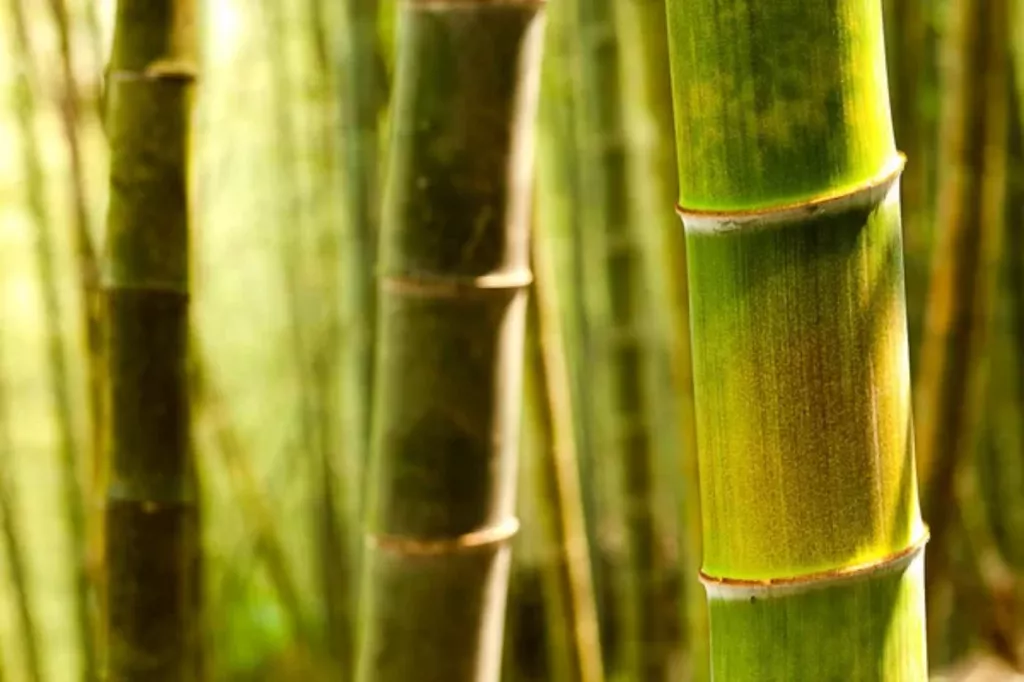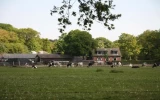Is Bamboo Farming Profitable? (Breakdown for 2024)
Bamboo farming, a rapidly growing agricultural practice, has gained significant attention for its profitability potential in 2024. In this article, we will examine the economic viability of bamboo cultivation, analyzing factors like market demand, cost of cultivation, and potential returns, to provide a comprehensive understanding of its financial prospects.
In 2024, bamboo farming presents a promising financial opportunity, with estimated profits ranging from $3,000 to $20,000 per acre annually. The profit margin typically falls between 15 and 40% influenced by factors such as initial investment costs, ongoing maintenance expenses, and farming techniques.
Keep in mind, however, that a bamboo farm typically becomes profitable only after 3 to 5 years. To help you accommodate this growth period, we will give you some tips on how to streamline costs while boosting revenues from your bamboo products.
Summary
- Revenue and profits from bamboo farming become significant from the fourth year onwards, with a projected net profit range of $5,000–$25,000 per acre from the fifth year onwards.
- The niche market of potted bamboo plants has the potential to generate profits in the range of $500 to $1,500.
- The most profitable type of bamboo, in terms of estimated annual profit per hectare, is Guadua bamboo, with an estimated annual profit of $5,750 per hectare
- Bamboo sells at higher prices when sold to craft and furniture makers, with an estimated price range of $40–$200, indicating that specialty buyers interested in using bamboo for making furniture, crafts, or other goods are willing to pay higher prices for the raw material.

On this page:
Costs and Profit Breakdown for Bamboo Farming
Exploring bamboo farming as a potential avenue for investment requires a clear understanding of the expected profit and return on investment (ROI).
Initial investment to establish a bamboo farm
The table below reflects an estimated initial investment range for bamboo farming per acre:
| Initial Costs | Cost Range per Acre (USD) |
|---|---|
| Land preparation | 500 - 1,000 |
| Planting material | 250 - 750 |
| Labour | 500 - 1,500 |
| Irrigation systems | 1,000 - 2,000 |
| Fencing | 300 - 800 |
| Miscellaneous expenditures | 250 - 500 |
-
Land preparation costs: This cost covers activities like clearing the land, plowing, and preparing the soil for planting. The range in cost can be due to the land's initial condition and the extent of preparation required.
-
Planting material costs: This refers to the cost of acquiring bamboo plants or seeds. Variations in cost depend on the species of bamboo, its availability, and the quantity required for planting an acre.
-
Labor costs: Labour costs encompass all manual work involved in setting up the farm, including planting, initial maintenance, and possibly the installation of other infrastructure. The range in cost reflects differences in local wage rates and the amount of labor required.

-
Irrigation systems costs: This includes the expense of installing an irrigation system to ensure adequate water supply to the bamboo plants. The cost can vary based on the complexity and size of the system needed for an acre.
-
Fencing costs: Fencing is important for protecting the bamboo crop from animals and unauthorized access. The cost difference is influenced by the choice of fencing materials and the perimeter size of the farmed area.
-
Miscellaneous expenditures: This category covers a range of other expenses such as tools, initial fertilizers, and any other unforeseen costs that might arise during the establishment phase. The range allows for flexibility in accounting for these variable expenses.
Ongoing costs to maintain a bamboo farm
After the initial setup, you'll face some ongoing costs, primarily for maintenance and labor. Below is an estimated range for these expenses per acre:
| Particulars | Annual Cost Range (USD) |
|---|---|
| Maintenance labour | 300 - 700 |
| Fertilizers | 20 - 150 |
| Water | 100 - 400 |
| Harvesting labour | 200 - 500 |
-
Maintenance labor costs: This cost covers regular upkeep tasks such as weeding, pruning, and general care of the bamboo plants. The range in cost reflects factors like the size of the farm, the density of planting, and local wage rates.
-
Fertilizer costs: Fertilizers are essential for ensuring the healthy growth of bamboo. The variation in cost depends on the type and quantity of fertilizer used, as well as the nutritional needs of the specific bamboo species being cultivated.
-
Water costs for irrigation: This expense accounts for the water used in irrigation. The cost can vary significantly based on the local cost of water, the irrigation method used, and the climate, as some regions may require more frequent watering than others.
-
Harvesting labor costs: The cost for harvesting labor includes cutting, collecting, and possibly initial processing of the bamboo. This expense varies based on the amount of bamboo harvested, the efficiency of the labor force, and local labor costs.
Revenue and profits from bamboo farming
A bamboo farm typically becomes profitable only after 3 to 5 years, which means your financial planning should accommodate this growth period. The table below shows the estimated profit range for the 4th and 5th years of bamboo farming:
| Year | Expected Revenue Range (USD) | Net Profit Range (USD) |
|---|---|---|
| 4 | 5,000 - 10,000 | -2,000 - 3,000 |
| 5+ | 10,000 - 30,000 | 5,000 - 25,000 |
By the fourth year, the bamboo is mature enough for initial commercial harvesting, which generates a moderate level of revenue. The range in revenue reflects factors like the market price of bamboo, the yield, and the quality of the bamboo harvested.

However, despite generating revenue, the net profit can vary significantly, even potentially being negative. This is due to the accumulated costs over the previous years and the initial lower yield of younger bamboo.
From the fifth year onwards, as the bamboo matures further, the revenue potential increases significantly. This is due to higher yields, better quality bamboo, and potentially improved market prices.
With higher revenue and stabilized ongoing costs, the net profit sees a substantial increase. The profit margin improves dramatically in these years, reflecting the efficiency of bamboo farming once the crop is fully established.
To this day, bamboo remains to be one of the most profitable crops for small farms in Australia.
Estimated profit from various bamboo products
Profits in bamboo farming come from various products like lumber, live bamboo, or potted bamboo plants used for privacy screens or as part of sustainable farming practices.
| Revenue Source | Estimated Net Profit |
|---|---|
| Lumber | $1,500 - $3,000 |
| Live bamboo | $1,000 - $2,500 |
| Potted plants | $500 - $1,500 |
- Lumber: Bamboo lumber, used in construction and manufacturing, can be quite profitable.
- Live bamboo: This includes selling bamboo for landscaping or as raw material. Higher profits would be expected from specialty or ornamental varieties.
- Potted plants: This is a niche market, typically targeting homeowners or small-scale landscapers.
Calculating profit margin for bamboo farming
Let's say a bamboo farm has $100,000 in annual revenue from selling bamboo plants and products. The farm's costs of goods sold, including materials, labor, and overhead, total $60,000 per year.
To calculate the profit margin, first calculate the gross profit by subtracting the costs from the revenue:
Gross profit = Revenue - Cost of goods sold
= $100,000 - $60,000
= $40,000
Next, divide the gross profit by the revenue and multiply by 100 to get a percentage:
Profit margin = (Gross profit / Revenue) x 100
= ($40,000 / $100,000) x 100
= 40%
In the US, profit margins range from 15-40% on average for bamboo cultivation.
The Most Profitable Types of Bamboo
The table below shows the estimated profit from the most lucrative types of bamboo:
| Type of Bamboo | Initial Investment (USD/ha) | Annual Maintenance (USD/ha) | Yield (Tonnes/ha/year) | Market Price (USD/Tonne) | Estimated Annual Profit (USD/ha) |
|---|---|---|---|---|---|
| Moso bamboo (wood) | 2,000 | 500 | 20 | 200 | 3,500 |
| Guadua bamboo | 2,500 | 600 | 25 | 250 | 5,750 |
| Clumping bamboo | 1,500 | 400 | 15 | 150 | 1,850 |
| Black bamboo (ornamental) | 3,000 | 700 | 10 | 300 | 2,300 |
| Bamboo for shoots | 2,000 | 500 | 30 | 100 | 2,500 |
Moso bamboo is known for its widespread use in various industries
Moso bamboo (Phyllostachys edulis) is one of the most commercially valuable bamboo, widely grown for its wood which is used in flooring, furniture, and building materials. It's also used for its edible shoots.
Guadua bamboo is popular for its strength
Known for its strength and flexibility, Guadua is often used in construction, particularly in South America. It's also used for making furniture and crafts.
Clumping bamboos are often used in landscapes
Varieties like Bambusa oldhamii and Dendrocalamus asper are prized for their fast growth and are often used for privacy screens and ornamental purposes. These types can be quite profitable in the landscaping industry.

Black bamboo is known for its unique aesthetic
Black bamboo (Phyllostachys nigra) is popular for its unique black-colored stems and is often used in gardens and for decorative purposes.
Bamboo species cultivated for their edible shoots
Some bamboo like Phyllostachys bambusoides (Japanese Timber Bamboo) and Bambusa vulgaris are cultivated primarily for their shoots, which are a delicacy in many Asian cuisines.
Lowering Costs and Optimizing Profits in Bamboo Farming
Tips to save on initial costs
-
Choose the right bamboo species: A specie like Phyllostachys nigra ‘Henon’ or Bambusa balcooa is important for yield and market demand.
-
Invest in farming equipment: Basic farming tools and irrigation systems are a must. Costs can escalate with larger operations but may result in greater profits long term.
-
Form an LLC: This could offer tax advantages and limit your liability, but comes with registration and potential legal costs.
Know where to sell your bamboo
When considering bamboo farming, one critical aspect you need to think about is where to sell your harvest. The market outlets for bamboo are diverse, and selecting the right channels can significantly influence your business's profitability.
| Sales Channel | Estimated Price Range per Unit |
|---|---|
| Local landscapers | $10 - $50 |
| Garden centers | $5 - $30 (wholesale price) |
| Craft and furniture | $40 - $200 (depending on the product) |
| Online marketplaces | $10 - $100 |
-
Selling to local landscapers: You can sell bamboo directly to consumers who are looking for ornamental, privacy or functional plants for their gardens.
-
Selling bamboo to garden centers: Local garden shops and nurseries may buy bamboo in bulk to resell to their customers.
-
Selling to craft and furniture makers: Specialty buyers may be interested in bamboo for making furniture, crafts, or other goods.

- Direct selling to online marketplaces: Platforms like Etsy or eBay could be viable for selling small-scale bamboo products or plants.
Remember, the prices can greatly fluctuate based on bamboo species, size, and overall market demand. Additionally, direct sales to consumers often yield higher prices but require more effort in marketing and customer interaction.



